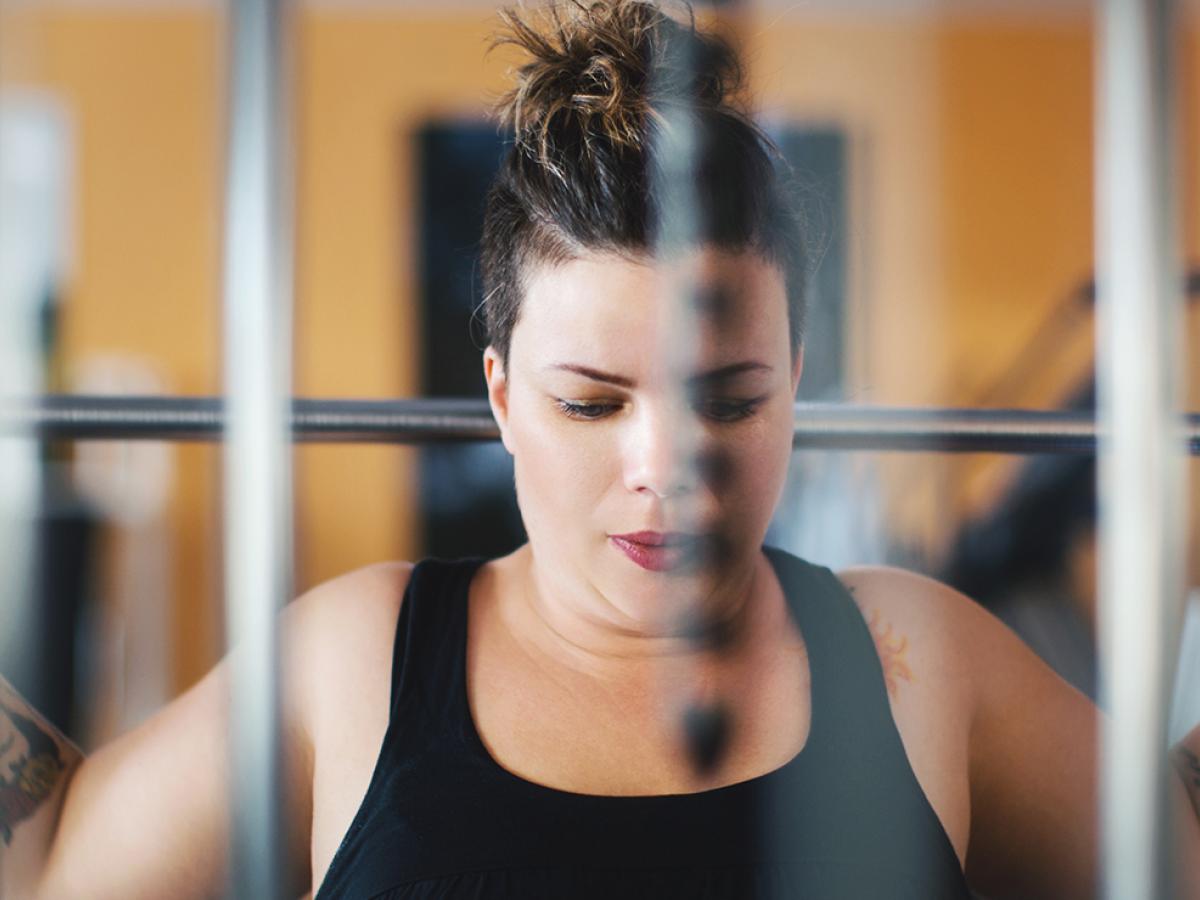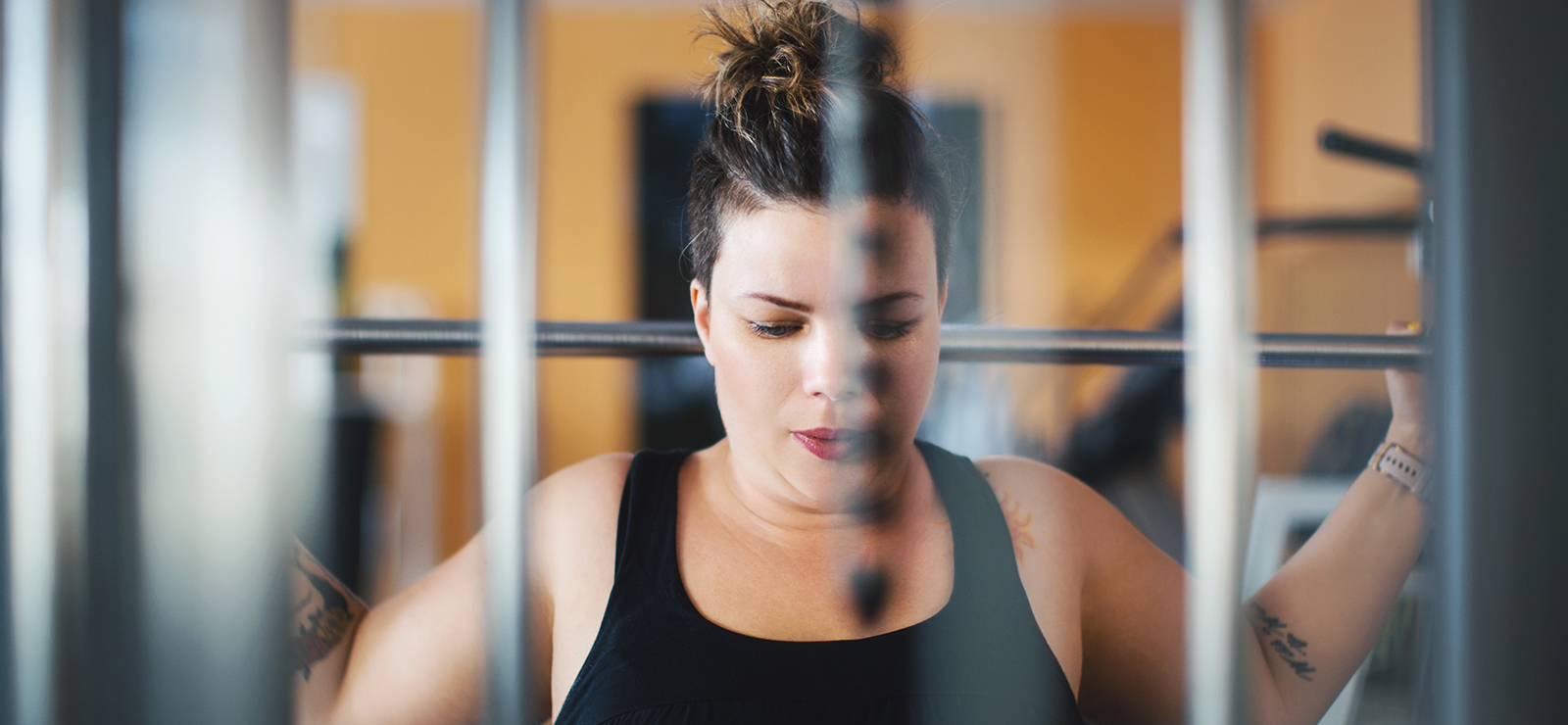May 19, 2022

No pain, no gain. That’s how the saying goes. But when an exercise-related injury is causing pain — and keeping you from working out — what are you really gaining? Our guess: Nothing but too much time on the couch and a whole lot of frustration.

Anyone can get hurt working out, but women are prone to different injuries than men, according to Dr. Tiffany Bohon, an MU Health Care primary care doctor specializing in sports medicine. Knowing what those injuries are — and how to prevent them — may just keep your workout streak alive.
Most Common Exercise Injuries for Women
We all know that women are built differently from men. And it’s those subtle physical differences — along with pregnancy, childbirth and irregular menstrual cycles — that can make women prone to certain injuries:
Patellofemoral Pain and Other Knee Injuries
Your knees are one of the largest, most complex joints in your body. They’re easily affected by the amount of weight they bear and their alignment with the hips — not the best news for women.
Women tend to have a wider-set pelvis than men (to allow for childbirth) so their hips and knees aren’t aligned as well as they should be. And for women who’ve been pregnant, the added weight can put a lot of added stress on the knees — in fact, every pound gained adds about three pounds of pressure to each knee.
When the knees are already stressed, it’s easier to experience knee injuries such as:
- Anterior cruciate ligament (ACL) tear: Women are up to eight times more likely than men to tear this ligament, which runs down the center of the knee. It can happen with sudden twisting or turning or when you land off-balance on one leg.
- Patellofemoral pain syndrome (PFPS): This condition, also known as “runner’s knee” or “jumper’s knee,” causes pain in the front of the knee and around the kneecap (patella). The pain intensifies when the knee is flexed or bent during weight-bearing activities (think squats or climbing stairs).
Stress Fractures
Stress fractures occur when repetitive force and overuse causes a tiny crack in a bone. While they are common regardless of sex, women are at least twice as likely as men to develop a stress fracture.
Women, especially those involved in high-impact activities, can suffer from what experts call the “female athlete triad.” Excessive exercise without enough caloric intake can lead to inadequate nutrition, irregular periods and weakened bones — a combination that increases the risk of stress fractures and broken bones.
But even if you aren’t training for a marathon or don’t consider yourself a female athlete, overuse and too much exercise without properly fueling your body can leave you susceptible to stress fractures.
Tendonitis
Tendonitis is irritation or inflammation of a tendon — the thick tissue that connects muscle to bone. It can happen anywhere on the body but tends to occur in the places that get overused, such as elbows, wrists, shoulders and ankles. Tendonitis is more common in people older than 40, as tendons age and don’t tolerate repetitive stress as well.
Tendons need to be exercised but not overexercised (it’s a fine balance). Women need to be especially careful during pregnancy and child-rearing years, when exercise may not be consistent. When workouts are only occasional or paused for a length of time, the tendons can tighten, making them prone to injury when exercise resumes.
How to Prevent Injury During Exercise
The good news is there are simple steps to help prevent these common injuries:
- Make sure to warm up: Before jumping into a high-intensity workout, start with some light cardio (jumping jacks, marching or jogging in place) to get your heart rate going and your muscles warm and loosened.
- Avoid exercises that stress the knees: Certain exercises really strain the front of the knee (lunges or leg extensions). Find alternatives if an exercise hurts your knee — instead of traditional squats, try squatting against a wall.
- Cross-train: If you don’t vary your workouts, overuse injuries are more likely to occur. Instead, incorporate different types of exercise into your week to include strength training, cardio and stretching.
- Don’t skip the post-workout stretch: If you’re short on time, you’re better off cutting your cardio short by five minutes to get the stretch in. Foam rollers are a great stretching tool with easy-to-follow instructions readily available online.
Tips for Treating Workout Injuries
If you do get hurt — yes, it does happen — knowing what to do can help you avoid additional swelling or long-term pain. For minor injuries, follow the RICE protocol:
- Rest to avoid adding stress to the area
- Ice for 20 minutes at a time, at least three times daily, for 72 hours after the injury
- Compression with an elastic, stretchable bandage to control swelling
- Elevation to help swelling go down
Have your injury evaluated by a medical professional if you experience:
- Extreme swelling and warmth, especially around a joint
- Inability to walk without pain
- Pain associated with numbness and tingling or catching and locking of the joint
- Persistent pain despite a period of rest and activity modification
Next Steps and Useful Resources
- Want to meet with a sports medicine specialist? Find one today.
- Curious about sports medicine services? Learn more.
- Injured within the last week? Check out our walk-in sports injury clinic.


